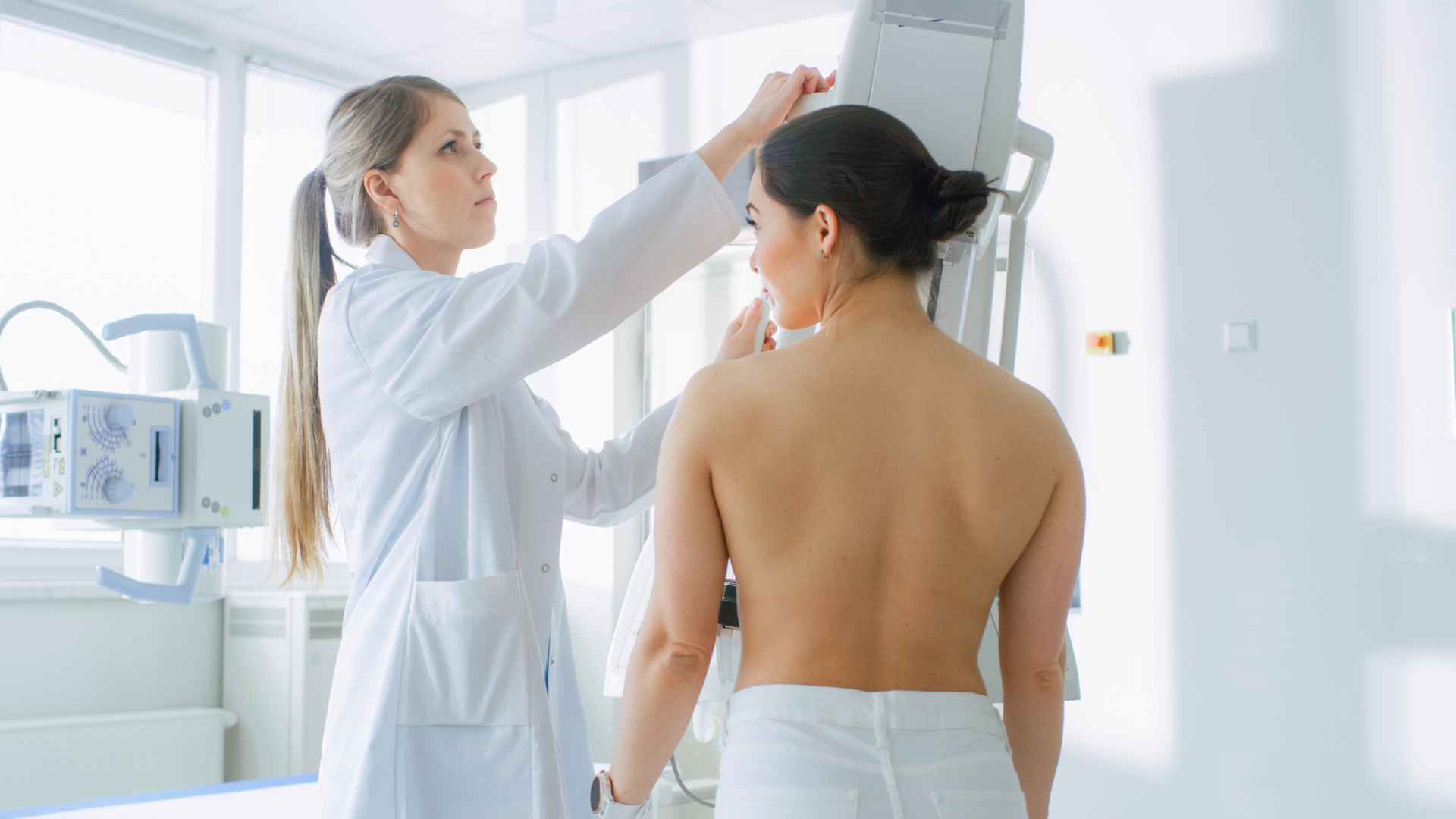Reducing Breast Cancer – Mammography
New cases: In the US in 2018, there will be an estimated 266,120 new cases of invasive breast cancer diagnosed in women; 2,550 cases diagnosed in men; and an additional 63,960 cases of in situ breast lesions diagnosed in women.
Incidence trends: From 2005 to 2014, the most recent 10 years for which data are available, invasive breast cancer incidence rates were stable in white women and increased slightly (by 0.3% per year) in black women.
Deaths: An estimated 41,400 breast cancer deaths (40,920 women, 480 men) will occur in 2018.
Mortality trends: The female breast cancer death rate peaked at 33.2 (per 100,000) in 1989, then declined by 39% to 20.3 in 2015.
This progress, which is attributed to improvements in early detection (through screening, as well as increased awareness) and treatment, translates to an estimated 322,600 fewer breast cancer deaths than would have been expected if the death rate had remained at its peak.
The annual percent decline from 2006 to 2015 was slightly larger for white women (1.8%) than for black women (1.5%).
Signs and symptoms: The most common sign is a lump or mass in the breast. Other symptoms include persistent changes to the breast, such as thickening, swelling, distortion, tenderness, skin irritation, redness, scaliness, and nipple abnormalities or spontaneous nipple discharge.
Early breast cancer usually has no symptoms and is most often diagnosed through mammography screening.
Risk factors
Like most cancers, older age is the strongest risk factor for breast cancer. Many other risk factors that influence risk modify exposure of breast tissue to reproductive hormones.
Some of these are potentially modifiable, such as weight gain after the age of 18 and/or being overweight or obese (for post-menopausal breast cancer), post-menopausal hormone use (combined estrogen and progestin), physical inactivity, and alcohol consumption; breastfeeding for at least one year decreases risk.
Additional reproductive factors that increase risk include a long menstrual history (menstrual periods that start early and/or end later in life), never having children, having one’s first child after age 30, high natural levels of sex hormones, and recent use of oral contraceptives.
Factors related to medical history that increase risk include a personal or family history of breast or ovarian cancer; inherited mutations (genetic alterations) in BRCA1, BRCA2, or other breast cancer susceptibility genes; certain benign breast conditions, such as atypical hyperplasia; a history of ductal or lobular carcinoma in situ; high-dose radiation to the chest at a young age (e.g., for treatment of lymphoma); high breast tissue density (the amount of glandular tissue relative to fatty tissue measured on a mammogram); and type 2 diabetes (independent of obesity).
Two medications – tamoxifen and raloxifene – have been approved to reduce breast cancer risk in women at high risk. Raloxifene appears to have a lower risk of certain side effects, but is only approved for use in post menopausal women.
Aromatase inhibitors are another type of medication that help prevent breast cancer in women without functioning ovaries, but currently are only
approved to prevent cancer recurrence.
Early detection
Mammography is a low-dose x-ray procedure used to detect breast cancer at an early stage. Early detection with mammography can allow for less extensive treatment and has been shown to reduce breast cancer mortality.
However, like any screening tool, mammography is not perfect; it can miss cancer (false negative) and can also appear abnormal in the absence of cancer (false positive). About 1 in 10 women who are screened have an abnormal mammogram, and only about 5% of these women have cancer.
Mammography also detects cancers and in situ lesions (e.g., ductal carcinoma in situ [DCIS]) that would never have progressed and caused harm (i.e., over diagnoses), with estimates ranging from <5% to >30%.
For women at average risk of breast cancer, recently updated American Cancer Society screening guidelines recommend that those 40 to 44 years of age have the option to begin annual mammography; those 45 to 54 should undergo annual mammography; and those 55 years of age and older may transition to biennial mammography or continue annual mammography.
Women should continue mammography as long as overall health is good and life expectancy is 10 or more years.
For some women at high risk of breast cancer, annual magnetic resonance imaging (MRI) is recommended in addition to mammography, typically starting at age 30.
Source: Cancer Facts & Figures 2018 – American Cancer Society





